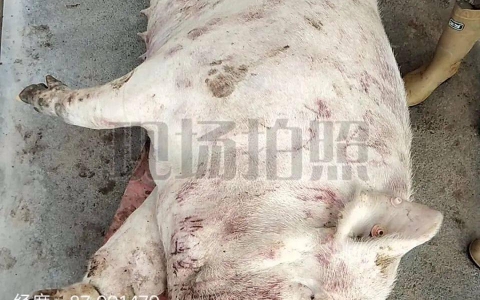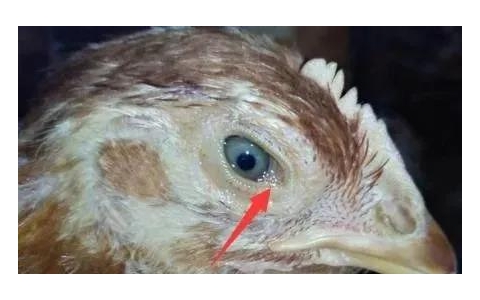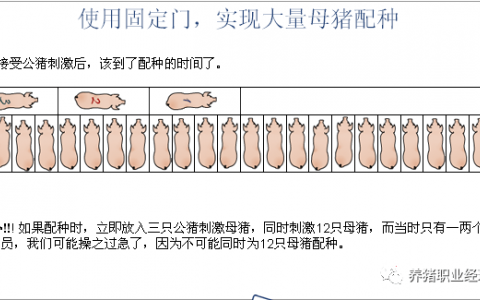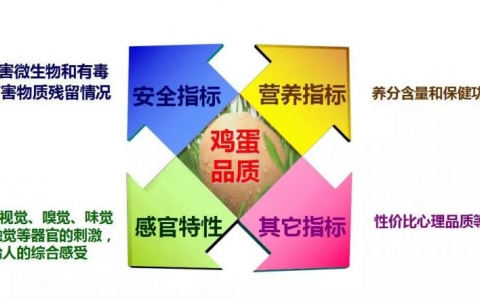前言
《猪场生物安全手册》是在中德畜牧业技术创新中心中德畜牧业合作项目框架下集合中德两国专家和从业人员力量编制的一本手册。由德方哈曼博士和戴夫斯先生主笔、中方郭丰娟女士翻译、孙其龙先生校对完成。本手册图文并茂,结合德国猪场生物安全工作要点,从猪场有害生物控制、牧场运输环节、人员把控、清洁消毒和饲喂安全等方面详细阐述了猪场生物安全防控的主要内容。这对于增强猪场管理和饲养人员生物安全意识,提高猪场生物安全防护工作具有借鉴和参考意义。今天节选有害生物管控部分以飨读者。
1 Pest Control 有害生物管控
1.1 Generalthoughts 概述
The importance of biosecurity in pig production is often not sufficiently appreciated
对有害生物的管控是生物安全不可或缺的组成部分,经常会被忽视
Adequate control of rodents, birds, insects and weeds isnecessary to prevent entry of diseases to the farm.
为防止致病菌侵入猪场,必须对啮齿类动物、鸟类、昆虫等进行控制,并清除杂草
Make a plan tocontrol pests present on the farm.
根据猪场有害生物的现实情况,制定相应的防害计划
Keep record ofexisting pests and products used for control.
对场区有害生物的现存情况以及用于防害的产品的使用情况进行调查和记录
Use traps tocontrol rodents.
用设诱饵的方法控制和消除啮齿类动物
Traps should be placed at strategic locations that arenot hazardous to children, staff and animals.
防鼠和灭鼠装置所放置的位置要避免对儿童、员工和其它动物造成伤害
Have a sketch ofthe location of the traps and bait-stations.
制定放置捕鼠器和诱饵的定位草图

Place meshesto prevent the entry of birds into production areas.
设置防鸟网防止鸟类进入生产区
Specificinsecticides must be used for the control of flies.
必须使用特定的杀虫制剂控制蚊蝇类有害生物
Keep the farmfree of garbage, waste and dirt.
保持猪场清洁,清除垃圾、废弃物和污染物
1.2 RodentControl 啮齿类动物防控
Rats and house mice occur worldwide as pests around people. They exist at our cellars, in the sewers, on dumpsters,in parks, in warehousesandfirstofallonfarms.Ratscancausenotonlysignificantdamage to supplies and to materials, but they also carry and spread deadly diseases for people and farm animals. Thefight against the rodents isoften underestimated. They are besidesother vectors responsible for serious outbreaks in the past like FMD (= Food and MouthDisease) and CSF (=Classical Swine Fever)in Europe. The rodentsmust also be seen as a big thread for spreadingASF in Europe and especially in China at themoment.
在猪业生产中鼠类被认定为有害生物,出现在世界各地,可以存活在地窖、下水道、垃圾箱、公园、仓库等处,在牧场尤为可见。鼠类不仅会对生产物资和设施设备造成严重的损害,而且还会携带和传播给牧场牲畜和人员致命的病菌。对啮齿类动物,尤其鼠类防控的重要性常常被低估。在过去欧洲爆发口蹄疫和猪瘟时,除了其它传播媒介外,鼠类造成的破坏和损失非常大!啮齿类动物对非洲猪瘟在欧洲,特别是当下在中国的传播是巨大的威胁,必须引起足够的重视!
Recognition oflive or dead rodents.
辨识出存活或死亡的啮齿类动物
Droppingslike faeces or insulating material.
是否存在鼠粪或鼠类造成的污垢,房舍的绝缘材料是否被破坏(鼠类筑巢处)
Runways,inside and outside.
在建筑内外活动的轨迹
Tunnels,holes signs of movement.
地道、鼠洞 活动迹象
Check withultraviolet light and have a look for faeces and urine.
用紫外线灯照射查看是否存在鼠粪和鼠尿

引自 Figure 1 Runways of rodentsout and inside ofbuildings (Source:BMEL, 2018)
Commensalrodents, Rattus norvegicus (brown rat), Rattus flavipectus (black rat) and Musmusculus (house mouse), are the most important pests both in urban and ruralregions.
棕鼠、黑鼠和家鼠是同类鼠中在城乡地区危害最大的啮齿类动物。
1.3 Biological key data of rats andmice 鼠类生物学数据
|
Brown rat 棕鼠 |
Black rat 黑鼠 |
House mouse 家鼠 |
|
|
Body weight (g) |
100 - 500 |
100- 300 |
17 - 36 |
|
体重(克) |
100 - 500 |
100- 300 |
17 - 36 |
|
Reproduction 繁殖力 |
year-round 全年均可繁殖 |
||
|
Sexual maturity 性成熟 |
3 - 4 months 3-4 个月 |
3 - 4 months 3-4 个月 |
1 - 2 months 1-2 个月 |
|
Litters per year 年产窝数 |
up to 7 高达7窝 |
up to 7 高达7窝 |
up to 10 高达 10 窝 |
|
Hatchlings per litter 每窝幼仔数 |
4 to8 4-8 只 |
||
|
Gestation perio 妊娠期 |
approx. 3 weeks 大约3周 |
|
Life expectancy 预期寿命 |
12 - 24 months 12-24 个月 |
||
|
Natural behaviour 自然行为 |
Climbs, swims and dives well; lives outside, also in buildings and in the sewerage; builds also earth- nests 善于攀爬、游水和潜水;存活在建筑内外区域和下水道里;地下巢居 |
Very good climber; lives within buildings 善善于攀爬;存活在建筑内 |
builds no holes in the ground;climbs; avoids water; lives also outside of buildings 不建土巢;能攀爬; 不喜水;建筑内外均可存活 |
|
Foraging 觅食力 |
Omnivores; once adopted feeding places are always re-visited 杂食;一旦适应觅食场地,总会反复出现 |
Omnivorous, Omnivorous, prefers herbal feed; feeding places are visited less regular 杂食,喜草本食物;觅食地点不固定 |
Omnivorous, prefers herbal feed; sporadic use of feed sources 杂食,偏好草本食物;觅食地点不固定,不定时出现在觅食点 |
|
Activity time 活动时间 |
Nocturnal animal 昼伏夜出 |
引自 Table 1 Source: BMEL, 2018
1.4 Reasons for a rodentcontrol防控啮齿类动物的原因
- 1.4.1 Rodents are carrier and important vectors for importantpig diseases.
啮齿类动物携带致病菌,传播疫病,是养猪业的重大隐患
Around100 diseases can be transmitted from rodents to humans and animals. For animalsand humans should be mentioned among other things:
约有100 种疾病可以由啮齿类动物传染给人类和其它动物,其中涉及:
|
Disease疾病 |
Agent 媒介物 |
Rodents implicated 涉及的啮齿类动物 |
|
African Swine Fever 非洲猪瘟 |
Virus 病毒 |
Rats大鼠 |
|
Classical Swine Fever 猪瘟 |
Virus 病毒 |
Rats大鼠 |
|
Typhus 斑疹伤寒 |
Salmonella 沙门氏菌属 |
Rats大鼠 |
|
Bordetelosis 波氏菌病 |
Bacteria 细菌 |
Rats大鼠 |
|
Encephalomyocarditis 脑心肌炎 |
Virus 病毒 |
Rats, mice 大鼠、小家鼠 |
|
Leptospirosis 钩端螺旋体 |
Bacteria 细菌 |
Rats, mice 大鼠、小家鼠 |
|
Pseudorabies 伪狂犬 |
Virus 病毒 |
Rats大鼠 |
|
Salmonellosis 沙门氏菌 |
Bacteria 细菌 |
Rats, mice 大鼠、小家鼠 |
|
Swine Dysenterie 猪痢疾 |
Bacteria 细菌 |
Rats, mice 大鼠、小家鼠 |
|
Swine Erysipelas 猪丹毒 |
Bacteria 细菌 |
Rats大鼠 |
|
Toxoplasmosis 弓形体 |
Protozoa 原生动物 |
Various rodents 多种啮齿类动物 |
|
Trichinosis 旋毛虫病 |
Nematodes线虫类 |
Rats大鼠 |
|
Hantavirus infections 汉坦病毒感染 |
Virus 病毒 |
Mice 小家鼠 |
引自 Figure 2 Source: PIH-107, 2010, fc 2019
Also, parasites are introduced via rats and mice, suchas ticks, fleas and tapeworms.
此外,大鼠和小家鼠还会传播寄生虫,如蜱虫、跳蚤和绦虫类。
- 1.4.2 Spread or accelerate the spreadofdiseases. 传播或加速疾病的传播
- 1.4.3 Attract other predators, rodents arealso a food source.
会吸引其它动物聚集(啮齿类动物会被其它动物捕食),造成更大的损失
1.5 Steps of rodentcontrol 管控啮齿类动物的措施
- 1.5.1 Sanitation 环境卫生
Plant free areaaround the buildings
清除建筑周围的植物
Clean and removeany garbage, waste anddirt!!!
清洁和清除所有垃圾、废物和污染物!!!
Grass must becut regularly
定期修短草坪
Search for holesin the grass and place baits in holes
寻找草坪上的鼠洞,放置诱饵

引自 Figure 3 Perfect habitat for rodents (Source: BMEL,2018)
- 1.5.2 Rodentproofconstruction 猪场建筑防鼠措施
Buildings needto be rodent proofed.
具备防止鼠类进入猪场的措施
Close holes, cracks and improve the surrounding area ofthe buildings
封闭孔洞、裂缝,改善建筑物周围环境
Keep anydoors, windows and entries for humans closed.
人员进出时关闭好所有的门、窗和入口
Lay a band ofgravel around the buildings (at least 50 cm wide).
在建筑四周铺筑至少 50cm 宽的碎石道
- 1.5.3 Populationreduction 减少数量的措施
Trapping 捕鼠夹
Set traps right against the wall, corners, dark places,where mice like to hide.
在墙壁角落、黑暗的地方贴墙设置捕鼠夹(鼠类喜欢躲藏之处)

引自 Figure 4 Source: PIH-107, 2010
- 1.5.4 Useofrodenticides 使用灭鼠剂
Continuous useof toxic baits safest rat and mice reduction.
持续使用毒饵安全的灭鼠方法
The populationis kept on a low level.
有效降低数量
Using baitstations in and outside the buildings.
在建筑物内外均放置毒饵
Check the baitstations on a monthly basis.
每月检查毒饵的消耗情况
Change thebrand or kind of baits keep it attractive for rodents
更换不同种类的毒饵 可保持毒饵的诱食效果
theremust always be warning signs attached in visible places so that people cannotby mistake get in contact with poison
可见处必须始终有警告标志,以免人们误接触毒药
Active ingredients: Anticoagulantsare inhibiting blood clotting.
活性成分:抗凝血剂可抑制血液凝结
Anticoagulants first generation: Warfarin,Coumatetralyl, Chlorophacinone, etc. have to be taken by rodents several timesto be effective.
第一代抗凝血药:华法林、杀鼠醚、氯鼠酮等,啮齿类动物必须连续多次采食才能起效。

引自 Figure 5 Different types of baits (Source: BMEL, 2018)
|
Advantages 优点 |
Disadvantages 缺点 |
|
The rodents will die after a few days, so their death is not associated with the bait by their fellow rodents. 采食后几天即会死亡,与继后的啮齿类动物采食的诱饵无关 |
The rodents can develop resistances against the bait ingredients. 啮齿类动物可以对诱饵成分产生抵抗力 |
Anticoagulants Second Generation: Bromadioloneand Difenacoum, later Brodifacoum, Flocoumafen and Difethialone killeffectively after the first intake by rodents.
第二代抗凝血药:溴敌隆和鼠得克、大隆、氟鼠酮和噻鼠酮, 在第一次采食后即可有效灭杀啮齿类动物。
If therodents have developed a genetic resistance against anticoagulants of the firstgeneration, the usage of anticoagulants of the second generation is necessary.
如果啮齿类动物对第一代抗凝血药产生了遗传抗性,则有必要使用第二代抗凝血药。
Baitswith anticoagulant ingredients need to be placed in closed bait stations. So,non-target animals cannot eat them.
含抗凝剂成分的毒饵需要放置在封闭的诱饵盒内。如此,非目标动物不会受到灭鼠剂的负面影响,甚至被灭鼠剂毒死

引自 Figure 6 Examples for bait stations (Source: BMEL,2018)
- 1.5.5 Cats and dogs 猫和狗的管控
Cats anddogs are a high risk inside animal farms and therefore not allowed.Furthermore, the rodents adapt their behaviour to the existence of predators intheir habitat. So an effective reduction is not achievable.
针对养殖场生物安全来说,猫和狗在养殖场中属于高风险动物,因此不能在场中饲养。而且,啮齿类动物会很快适应如猫、狗等捕食者的存在,所以靠猫狗来减少鼠类的措施在养殖场是无法实现的。






